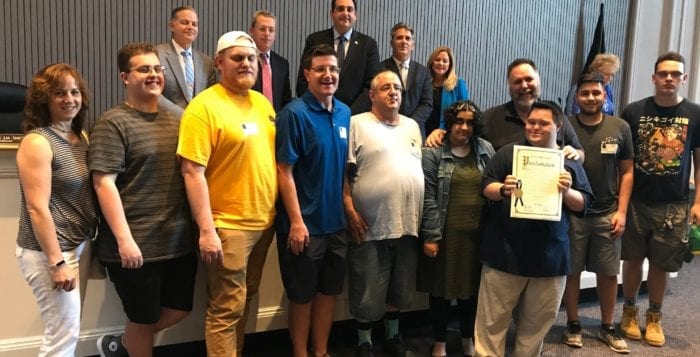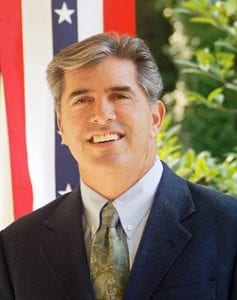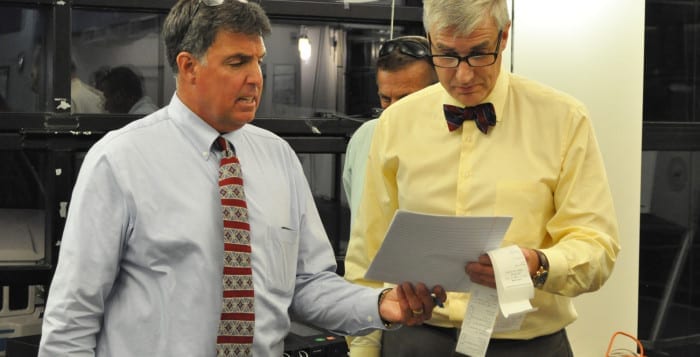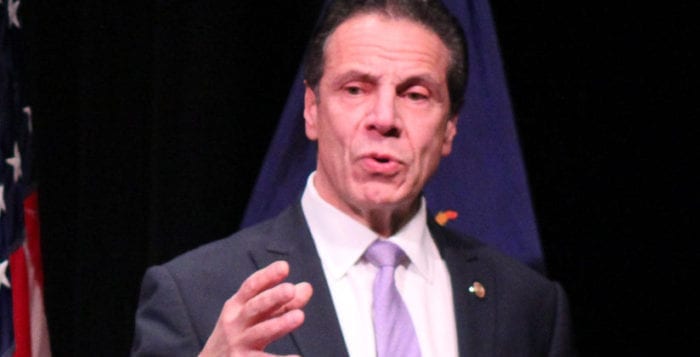Residents of New York’s 1st Congressional District took time out of their busy schedules Aug. 20 to sit down with their congressman to discuss what’s on their minds.
U.S. Rep. Lee Zeldin (R-NY1) held mobile office hours from 10 a.m. to 1 p.m. at the Setauket Fire Department on Main Street Tuesday. Constituents were invited to sit down, either one-on-one or in groups, with Zeldin or one of his staff members.

While many declined to discuss their specific questions, other residents waiting to speak to Zeldin said they were prepared to bring up issues such as background checks when buying guns, how to curb easy accessibility to assault-style rifles, Medicare, providing for veterans, immigration, health care for preexisting conditions and mandated vaccinations. One attendee wanted to know whether or not Zeldin is in favor of slashing the payroll tax and, if so, what other methods would he suggest to fund Medicare and Social Security.
Among the 71 who attended, several parents had their children in tow to provide them an example of civic engagement.
Sarah, 13, daughter of former Setauket congressional candidate Dave Calone, said this was the first chance she had to speak to an elected official about an issue.
“I wanted to talk with him about gun control,” she said while waiting to get an opportunity to speak with Zeldin. “I wanted to ask him about what measures the government is taking to ensure students are safe in school and other places as well.”
Kathleen Thornton, of Stony Brook, was with her son Jack.
“I thought it was good for him to get a sense of how government works,” the mother said.
The Stony Brook resident wanted to talk to Zeldin about the Excelsior Scholarship Program in New York and the income cutoff. She said the Excelsior funds also were not released until the initial payments to State University of New York schools were due, adding she only discovered issues with the scholarship program while helping her niece with her financial aid forms. While waiting to meet with the congressman, she said she hoped that he would know the right people to connect with to address her issues with the program.
Barbara Kantz, of East Setauket, who waited around two hours to meet with Zeldin, said she came to him with advocacy issues related to the environment and was satisfied with the strategies Zeldin offered, including those she can use as a citizen. She said to him that she knows he is an environmentalist, and she wanted to know how, as a congressman, he translates that to action programs “when we’re living in a time when science is somewhat dismissed, and we have an EPA that actually doesn’t believe in some of the notions of what an EPA should do.”
Three Village resident George Henik, before his meeting with Zeldin, said he would like to get a time frame from him about specific indictments.
“Why is [former FBI Director James] Comey still walking around and writing books and not in prison?” he asked.
Henik said he believes many have used the Congress as their weapon of choice and that some politicians, such as U.S. Reps. Adam Schiff and Jerry Nadler, both Democrats, are out of control.
His wife Susan Henik said she also had questions for the congressman including concerns about voter fraud, especially on the federal level.
The couple were optimistic about meeting with the congressman and felt they were addressing issues that people from both parties are concerned about, such as justice and voter fraud.
“These two questions that we have, or topics of discussions that we brought up, no one would want their election being tampered with, no one wants a coup of the president,” Susan Henik said.
According to a press release from Zeldin’s office, those interested in participating in a future meeting, including after work or during the weekend, can call 631-289-1097.

















